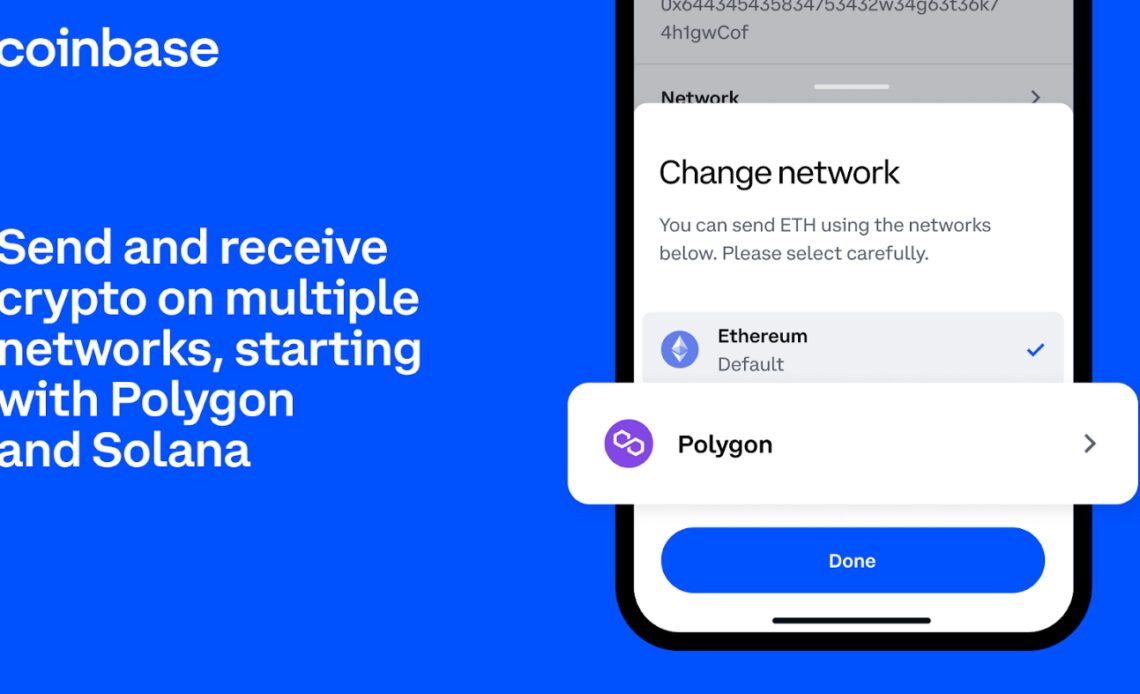TL;DR: Over the next month, eligible Coinbase customers will be able to send and receive ETH, MATIC, and USDC on Polygon, and USDC on Solana. The Polygon integration marks the first time Coinbase has enabled the ability to send and receive these assets on an L2.
By Nemil Dalal, Director, Product Management and Justin Blumenthal, Product Manager
Sending crypto on Ethereum has become increasingly expensive for individual users and institutions. As one of the most robust programmable blockchains, Ethereum has the largest ecosystem of developers, products, and services. But as blockchain usage has surged, gas fees (fees paid to miners to validate transactions on Ethereum) have skyrocketed, pricing out millions of would-be users. While these high gas fees have caused more affordable networks like Polygon and Solana to increase in popularity over the past 18 months, the process of funding wallets on these networks can be complex and time-consuming.
Coinbase is reducing the time, effort, and high fees of today’s experience by letting customers convert fiat to crypto and fund their Polygon and Solana wallets in minutes and at a fraction of the cost. Over the next month, eligible Coinbase and Coinbase Exchange customers will be able to send and receive ETH, MATIC, and USDC on Polygon, and they’ll be able to send and receive USDC on Solana.¹ Over time, we’ll add support for more tokens and more networks.
Access more of web3 at a fraction of the cost and time
On Ethereum, it can cost over $10 in gas fees to send small amounts of crypto from an exchange like Coinbase to a self-custodial wallet like Coinbase Wallet, and it can cost over $100 in gas to lend out larger amounts of crypto on protocols like Aave. This has driven a massive increase in development and activity on alternative networks, with over 30% of DeFi Total Value Locked now sitting outside of Ethereum. However, it’s not simple to move crypto across networks. Users must purchase crypto on an exchange, send it to their self-custodial wallet, then use a bridge to send their crypto to a different chain. It can take approximately 20 minutes, $50 in gas, and 10 protracted steps to purchase a NFT on Polygon via OpenSea. Now, Coinbase customers can convert their fiat to ETH, MATIC, and USDC and fund their Polygon wallet at a fraction of the cost and time, making it simple to explore more of web3.
Institutional traders are increasingly active across multiple networks and dapps, but the process of bridging…
Click Here to Read the Full Original Article at The Coinbase Blog – Medium…
























